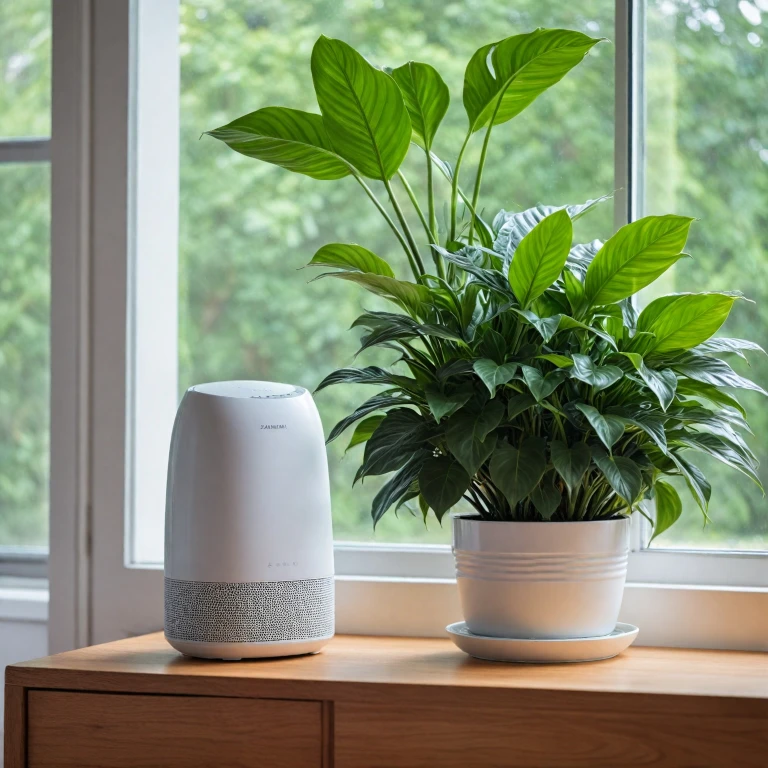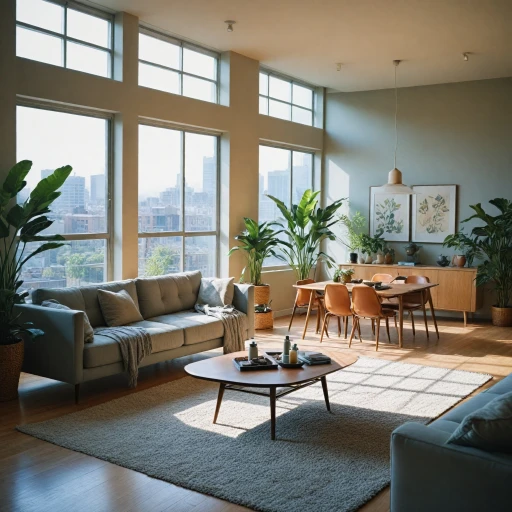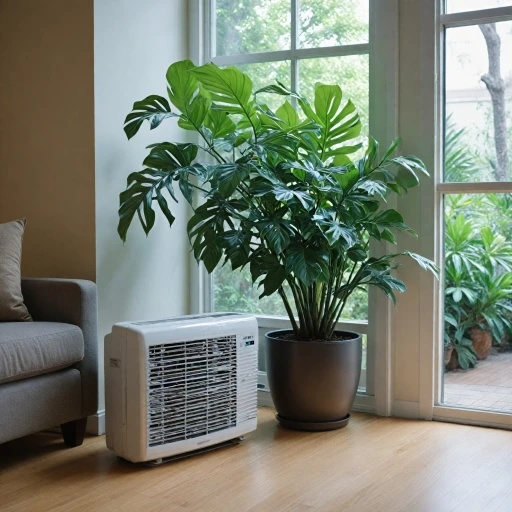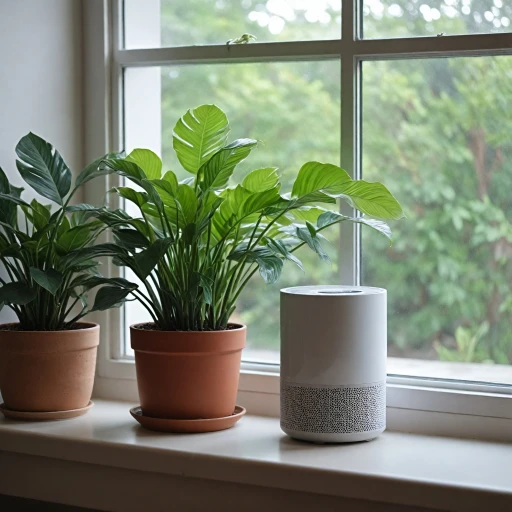Understanding Living Air Purifiers
The Concept of Living Air Purifiers
Living air purifiers are an innovative approach to enhancing indoor air quality by using plants. Unlike traditional air purifiers that rely on filters such as HEPA filters or ozone generators, living air purifiers utilize the natural ability of plants to filter out toxins, allergens, and pollutants from the air. This method not only helps in reducing airborne particles like dust, pollen, and smoke but also adds a touch of greenery to your living space.
Plants have been shown to absorb harmful substances like tobacco smoke, odors, and even some viruses and bacteria, making them an effective and eco-friendly option for air purification. By incorporating plants into your home, you can create a more pleasant and healthier environment.
How Do Living Air Purifiers Work?
The principle behind living air purifiers is quite simple. Plants take in carbon dioxide and release oxygen through the process of photosynthesis. During this process, they also absorb various pollutants present in the air. The roots and soil of the plants play a crucial role in breaking down these pollutants, effectively cleaning the air around them.
While traditional air purifiers use mechanical filters like HEPA filters to trap particles, living air purifiers offer a natural and sustainable alternative. This makes them an attractive option for those looking to improve air quality without relying solely on electronic devices.
For those interested in combining the benefits of living and traditional air purifiers, it's important to learn about the right plant choices and how to integrate them with classic air purifiers for maximum effectiveness. Understanding the maintenance and care required for plants is also essential to ensure they thrive and continue to purify the air effectively.
Benefits of Living Air Purifiers
Advantages of Incorporating Living Air Purifiers
Integrating living plants as air purifiers in your home offers a natural and aesthetic way to enhance air quality. Here's a closer look at the advantages:- Natural Filtration: Plants act as organic air purifiers by absorbing pollutants through their leaves. They help filter out harmful substances like volatile organic compounds (VOCs), which are often found in smoke and dust particles.
- Cost-Effective: Unlike classic HEPA filters and other air purification products that may require filter replacements costing hundreds every month, plants demand a much lower maintenance price. They are an economical option for improving indoor air quality.
- Biophilic Benefits: Beyond filtering the air, plants can improve mood, reduce stress, and increase productivity. This makes them a holistic addition to any environment.
- Reduction of Ozone Levels: Some plants have shown potential in decreasing indoor ozone levels, an ability that traditional air cleaners like air purifiers and HEPA filters cannot claim.
- Environmentally Friendly: A living air purifier doesn't contribute to pollution; it works harmoniously within ecological systems, unlike other air purification products that produce ozone or require energy.
Choosing the Right Plants
Selecting the Best Green Companions
When it comes to transforming your home into a clean-air sanctuary with living air purification, choosing the right plants is paramount. The right selection will not only enhance air quality but will also align with your living conditions and specific needs. To start, consider plants known for their ability to filter and improve your indoor environment. Plants like the Spider Plant, Snake Plant, and Peace Lily are popular options for their excellent air-purifying qualities [1]. These species are proven to effectively remove common pollutants such as smoke, dust, and odors, while providing a natural and aesthetically pleasing solution. Moreover, if you're targeting specific threats like tobacco smoke, viruses, and bacteria, it's important to research and select plants accordingly. Some species react more efficiently to particular pollutants, thereby enhancing your living air purifier's effectiveness. By keeping your particular concerns in mind, you'll be able to tailor your plant selection for maximum air purification benefits.Factors to Consider
The success of your living air purifier depends heavily on the plants' adaptability to your home environment. Here are some factors to consider:- Space: Ensure the plants can thrive in the available space. Larger plants or denser arrangements might be necessary for bigger rooms.
- Light: Understand the light requirements of your chosen plants. Some require bright light, while others are happy in lower light conditions.
- Maintenance: Consider the level of care each plant requires. If you're new to plant care or have a tight schedule, opting for low-maintenance varieties is advisable.
- Pet Safety: If you have pets, make sure your plant selections are non-toxic to animals.
Placement and Care Tips
Strategic Placement for Optimal Air Quality
Properly positioning your living air purifier is crucial for maximizing its efficiency. When placing your plants, consider placing them in rooms where you spend most of your time, such as the living room or bedroom. These areas often have higher levels of pollutants, including smoke, odors, and allergens. Placing your purifier in these spaces can significantly enhance the air quality by effectively filtering out particles and purifying the air.Regular Care is Key
To ensure your living air purifier thrives and continues to provide fresh, breathable air, regular maintenance is vital. Water these plants based on their needs, as over or under watering can impact their growth and purification abilities. It's also essential to periodically clean the leaves to remove dust and debris, which can hinder their filtering capacity.Understanding the Limitations
It's important to recognize that while living air purifiers can be effective, they might not completely eliminate all particles such as tobacco smoke or viruses. For comprehensive air purification, consider supplementing your plant air purifiers with air purifiers equipped with HEPA filters. These classic models are known for capturing small particles like dust and pollen and can effectively complement your living air setup, offering a multi-stage air cleaning solution. For specific tasks like smoke elimination or removing bacteria, consider adding a traditional air purifier as part of your setup.Care Tips for Optimal Performance
In addition to regular watering and cleaning, rotating your plants ensures even light exposure, promoting robust growth and consistent air filtration. If your plants are situated in low-light areas, consider opting for low-light tolerant species or positions where they'll receive adequate natural light. Monitoring the condition of your plants will help detect any signs of stress or disease, allowing for prompt action to maintain their health and effectiveness in filtering the air. Incorporating these care principles will help you harness the full benefits of your living air purifier, creating a healthier, more invigorating home environment.Challenges and Considerations
{ "h3": [ "Navigating Common Challenges and Considerations" ], "content": "Having a living air purifier in your abode is a unique and beneficial choice, but it comes with its own set of challenges and considerations.- Allergy Concerns: For individuals sensitive to pollen and other particles dust, a living air format with plants might seem counterintuitive. However, selecting plants known for low pollen production can alleviate this issue. Additionally, combining classic hepa filter air purifiers to tackle fine allergens like small particles can enhance your home's air quality.
- Maintenance Effort: Regular care, such as watering and ensuring adequate sunlight, is necessary to keep your botanical filtration system in top condition. This aspect contrasts auto mode air purifiers, where once set, minimal maintenance is required. Plan routine care by learning each plant's requirements to retain their effectiveness in eliminating smoke odors or mitigating viruses bacteria.
- Space and Placement: Arranging your plant purifiers strategically is crucial, particularly in rooms where air circulation is less active. Consider using a combination of living air setups with various model air purifiers to optimize air purification across larger areas.
- Price and Cost Considerations: While space can be a constraint, budget can also determine your setup. Though plants are generally cost-friendly, taking into account the accumulation of water, soil, and possibly more trading months can add up. Compared to the initial investment in advanced air cleaners with ozone generators, living air solutions represent a classic way to enhance purification without high monthly costs.
- Effectiveness in Combating Tough Odors: Filters like hepa air and air classic can be more effective against odors allergens, especially from tobacco smoke and hard-to-tackle pollutants. Meanwhile, plants typically handle broader air quality improvement tasks.
- Viruses and Bacteria Mitigation: While plants are adept at producing oxygen and improving general air conditions, they don't directly filter viruses bacteria as efficiently as some high-performance classic models, which utilize multiple stages air purification. Pairing them with tradi2dochepa units can enhance defense against airborne health risks.
Combining Living and Traditional Air Purifiers
Creating a Balanced System for Optimal Air Quality
Combining living air purifiers with traditional air purifier models can be a game-changer in achieving optimal air quality in your home. A living air purifier often complements traditional models, which utilize technologies such as HEPA filters, to remove pollutants like smoke, pollen, bacteria, and viruses. Integrating plants with traditional air purifiers can create a multi-layered defense against allergens and pollutants. Here’s how you can maximize the benefits:- Diverse Filtration Techniques: Traditional air purifiers equipped with HEPA filters are excellent at removing small particles including tobacco smoke, dust, and pollen. Adding living plants can further reduce particles like smoke odors and ozone in a natural, chemical-free way.
- Addressing Different Pollutants: While living air purifiers excel at removing carbon dioxide and contributing to higher oxygen levels, classic models take care of bacteria, viruses, and other airborne pathogens. This balance helps ensure comprehensive air purification.
- Boosting Auto Mode Efficiency: Certain air cleaner models come with auto mode features that adjust air purification levels based on detected pollutants. Living plants can stabilize the environment, potentially making these auto modes more efficient.
- Strategic Placement: Position traditional purifiers in spaces highly susceptible to allergens and odors like the kitchen or entryways where smoke might accumulate. Complement these with living plants placed strategically around your home for balanced aesthetics and function.
- Regular Maintenance: Ensure HEPA filters and other components of your classic air purifier are replaced according to the recommended schedule, often every 6 to 12 months, to prevent a drop in efficiency. Similarly, tend regularly to your living plants for optimal health and air cleaning capacity.



